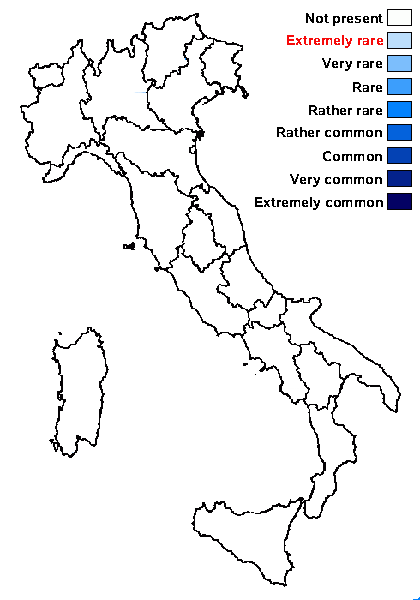Lecanora latro Poelt
Öst. bot. Z., 109: 524, 1962.
Synonyms:
Distribution:
Description: Thallus crustose, episubstratic, areolate, pale yellowish green, up to 1 cm across, developing on the thalli of Miriquidica nigroleprosa. Areoles 0.3-0.8 mm wide, smooth, flat to slightly convex, developing from the areoles of the host. Apothecia lecanorine, broadly sessile, 0.3-1.5(-2) mm across, with a flat to convex-uneven, blackish, yellowish-pruinose disc, and a smooth to undulate, sulphur yellow thalline margin. Thalline exciple rich in algal cells, corticate, the cortex with dense yellowish granules; epithecium grey and N- to dirty green and N+ purple, with granules; hymenium colourless, c. 65 µm high; paraphyses simple or forked, 1.5-2 µm thick, the apical cells swollen; hypothecium colourless. Asci 8-spored, clavate, Lecanora-type. Ascospores 1-celled, hyaline, of different shapes, broadly ellipsoid to subglobose, 8-14 x 5-8 µm. Photobiont chlorococcoid. Spot tests: thallus K+ yellow, C-, KC-, P-. Chemistry: isousnic acid, zeorin.Note: a silicicolous species with usually small and scattered individual thalli developing on those of its obligate host, Miriquidica nigroleprosa, with scattered reports from the Alps (outside Italy), where the species is much rarer than its host; to be looked for in the Italian Alps.
Growth form: Crustose
Substrata: rocks
Photobiont: green algae other than Trentepohlia
Reproductive strategy: mainly sexual
paras Miriquidica nigroleprosa

Predictive model
Growth form: Crustose
Substrata: rocks
Photobiont: green algae other than Trentepohlia
Reproductive strategy: mainly sexual
paras Miriquidica nigroleprosa

Predictive model
 Index Fungorum
Index Fungorum
 GBIF
GBIF


